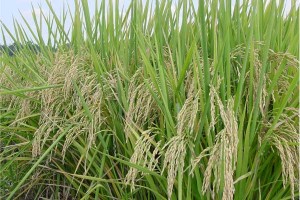Researchers at Trinity College Dublin in Ireland, Northern Arizona University, and University of California in Davis found that increases in temperature and carbon dioxide in the atmosphere are making rice agriculture a larger source of the greenhouse gas methane. The team’s findings appear online this week in the journal Nature Climate Change.
Rice is the world’s second-most produced staple crop, but rice paddies are one of the largest man-made sources of methane. The team of Trinity’s Kees Jan van Groenigen, Chris van Kessel of UC Davis, and Bruce Hungate of Northern Arizona analyzed data from 63 earlier studies on rice paddies in Asia and North America.
The experiments they analyzed measured the effect of rising temperatures and extra carbon dioxide in the atmosphere on yields of rice and the amount of methane released by rice paddies. Data from the experiments showed increased carbon dioxide in the atmosphere boosted rice yields by 25 percent and methane emissions by 42 percent, increasing the amount of methane emitted per kilo of rice.
Unlike carbon dioxide, however, rising temperatures were found to have only small effects on methane emissions, since warming decreases rice yield. However, these decreases in yield lead to increases of methane emissions per kilo of rice. Kees Jan van Groenigen, research fellow at Trinity College Dublin, and lead author of the study says, “Our results show that rice agriculture becomes less climate-friendly as our atmosphere continues to change.”
The authors note that there are steps rice growers can take to mitigate methane emissions. Mid-season drainage and alternative fertilizers have been shown to reduce methane emissions from rice paddies. Also, switching to more heat-tolerant rice cultivars and adjusting sowing dates can help prevent yield declines due to temperature increases, thus reducing the effect of warming on methane emissions per yield.
Read more:
- Process IDs Rice Traits to Help Tsunami-Hit Rice Growers
- Rice Growers to Develop Sustainable Farming Standards
- NYU to Study Response of Rice to Environmental Change
- Rice Bolstered for Climate Impacts by Fungus Spores
* * *


 RSS - Posts
RSS - Posts
[…] Current Rice Cultivation Techniques Adding Greenhouse Gases […]